
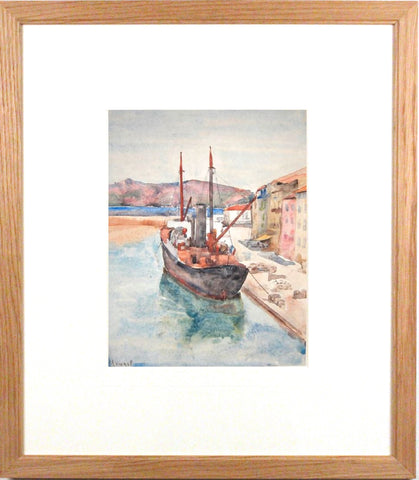
Fontainebleau Fine Art
VIVREL, André-Léon (French, 1886-1976) “The Steamer” (South of France) – Circa 1926-1928
$0.00
Call For Location | 203-325-8070
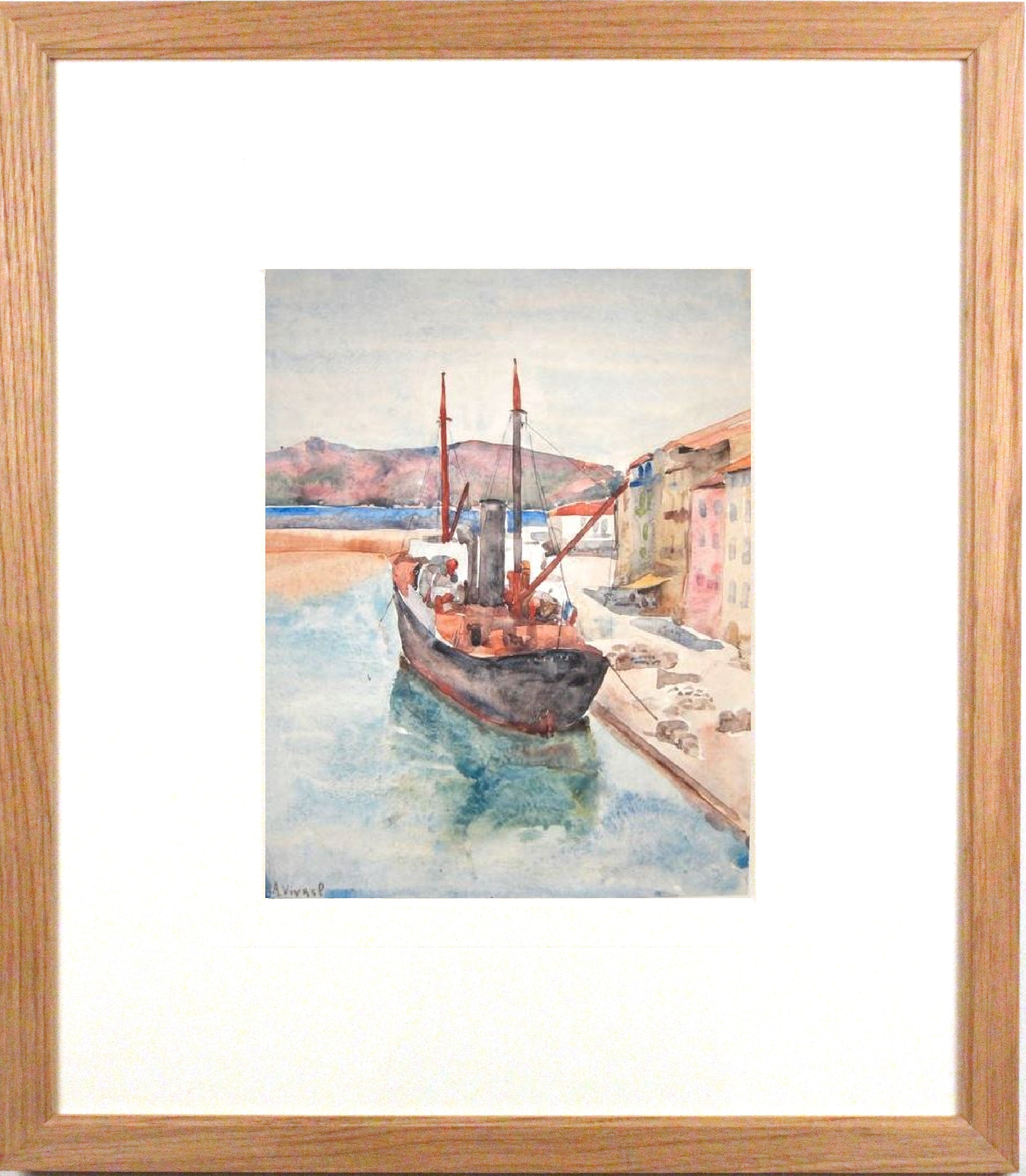
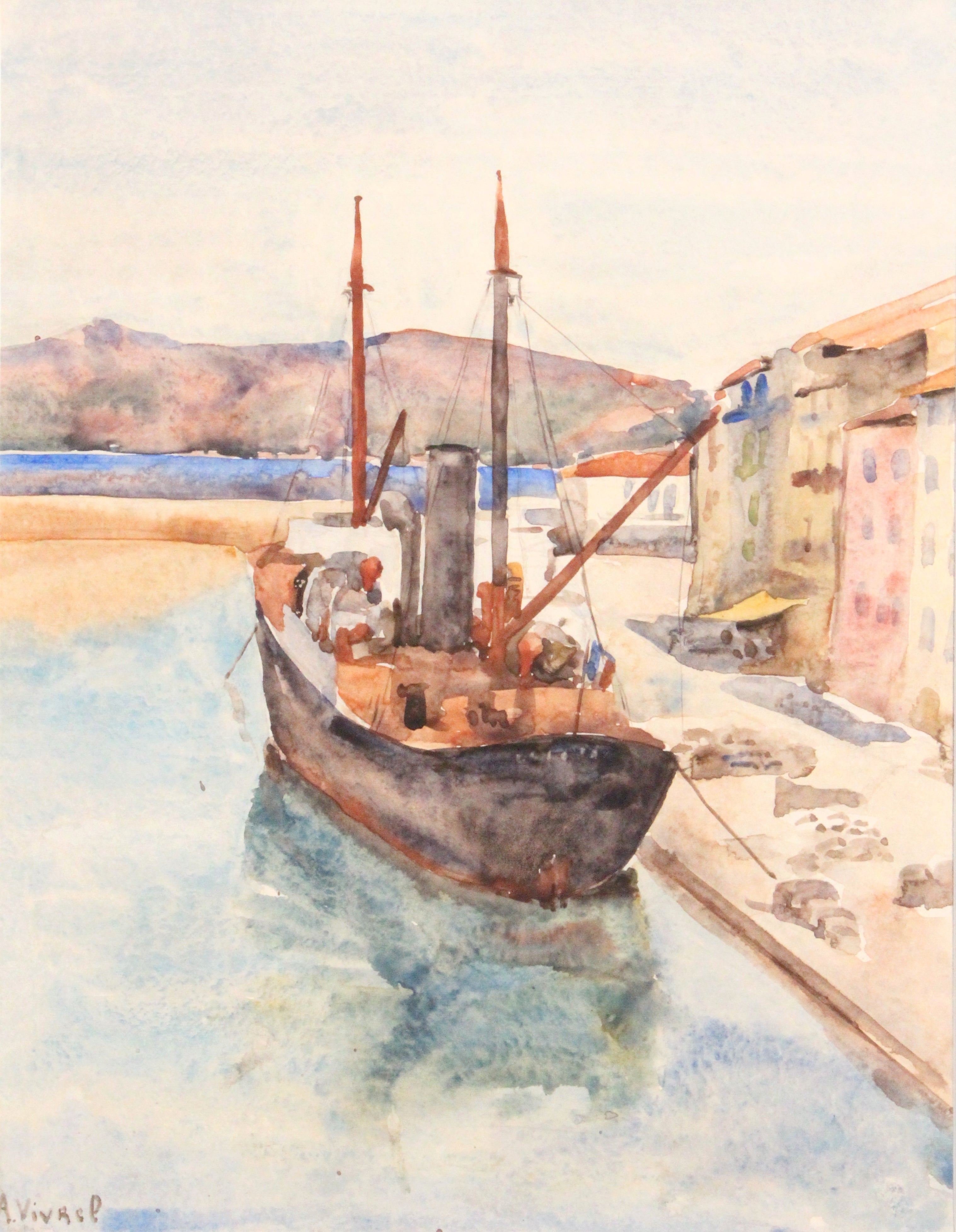
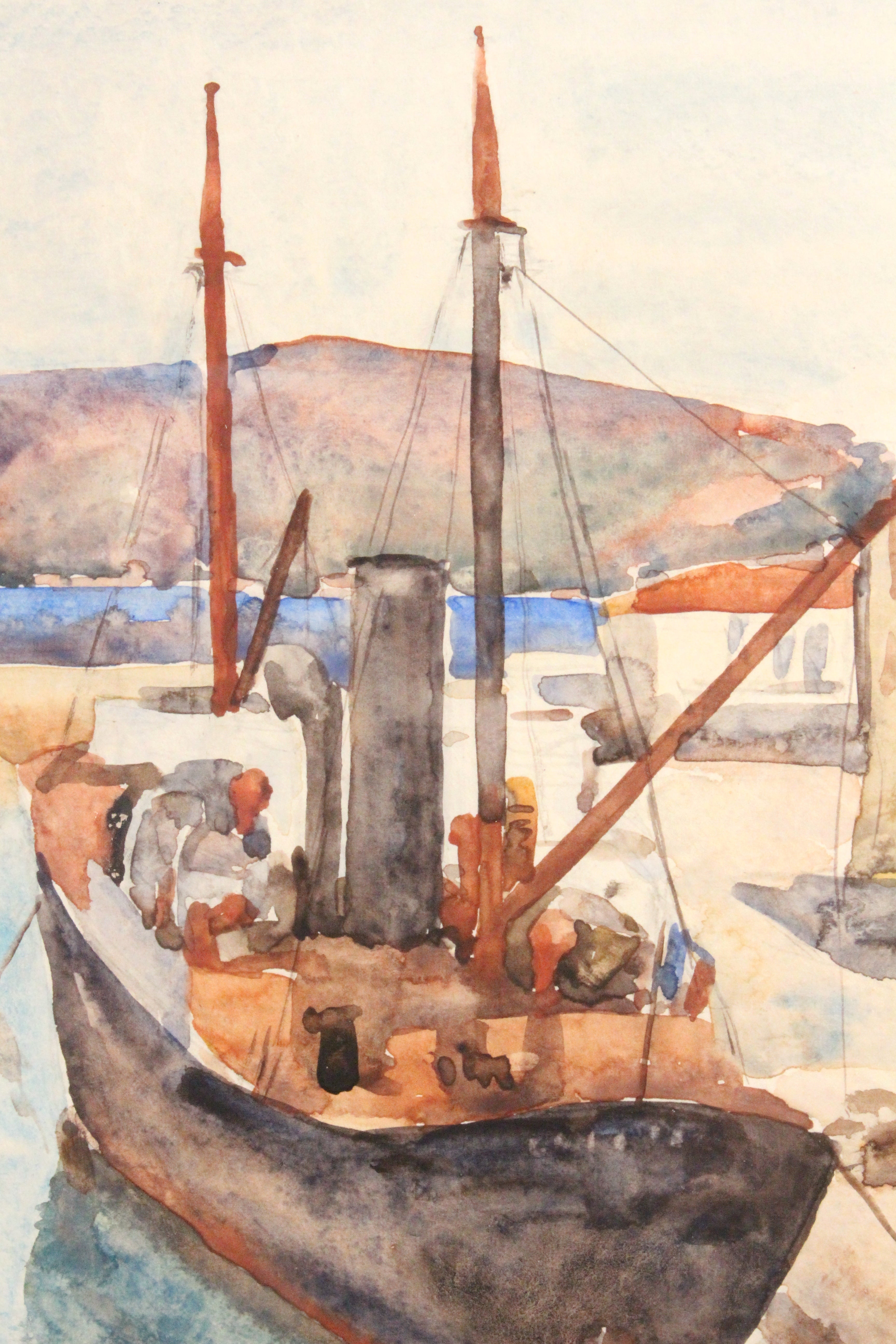
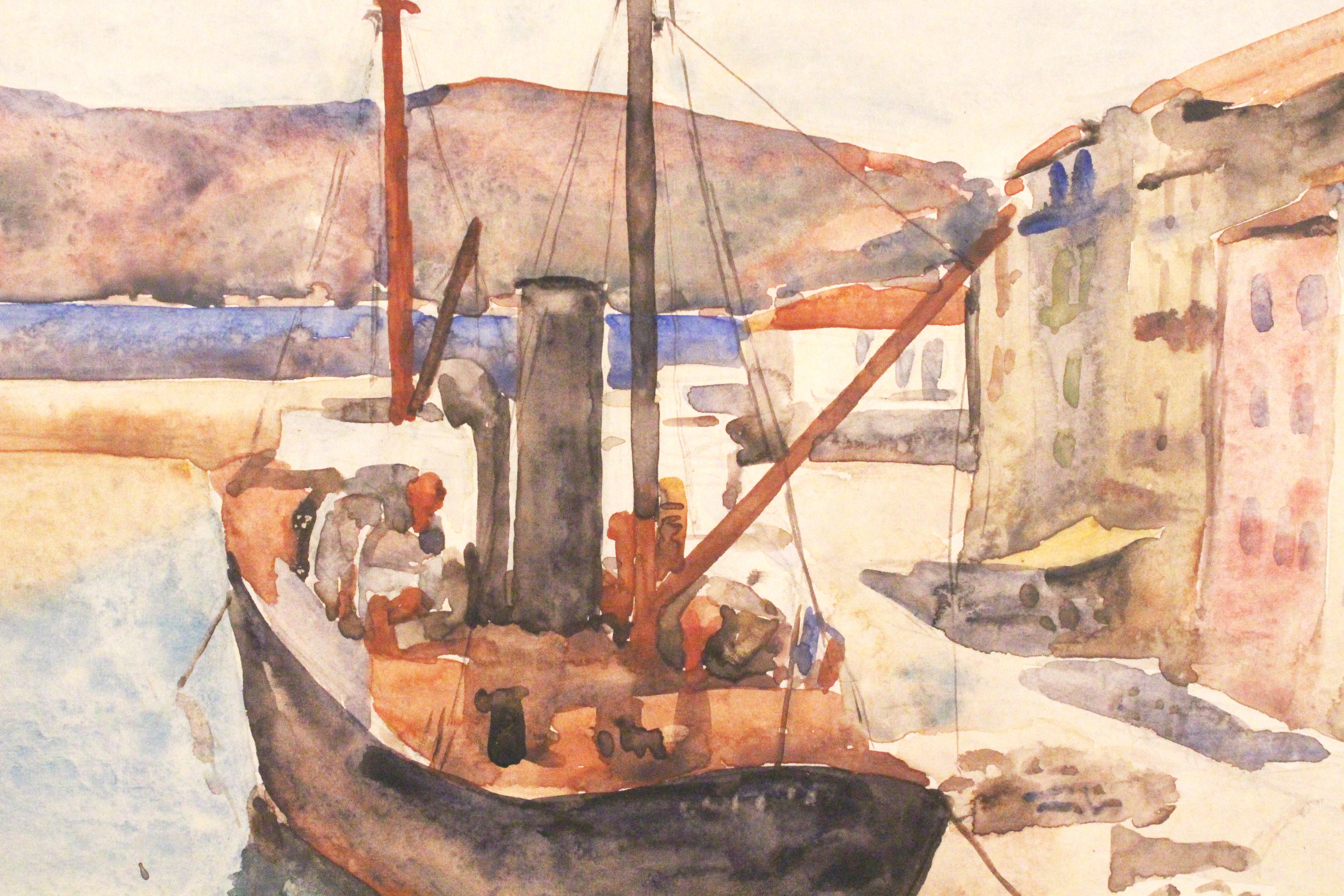
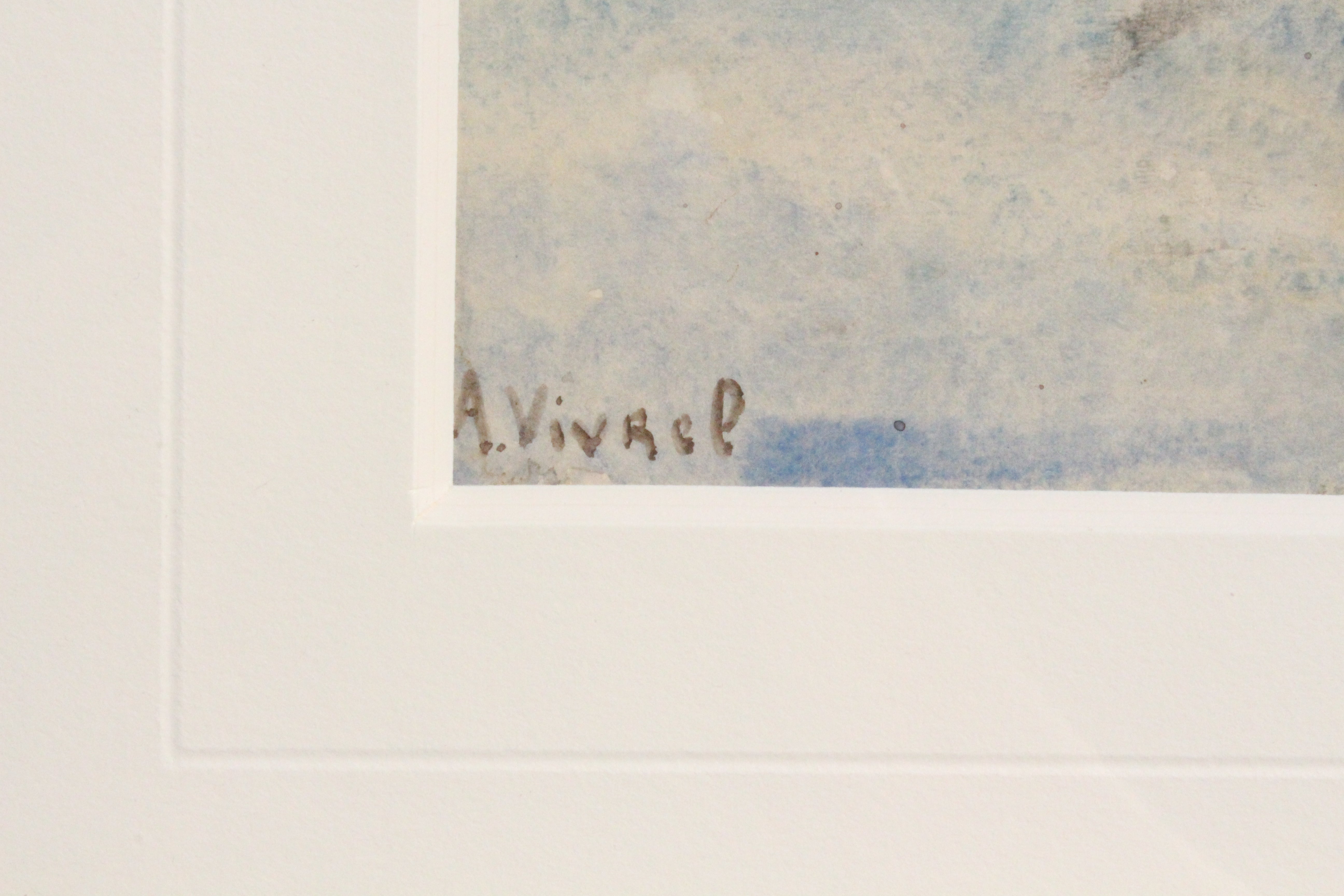
Fontainebleau Fine Art
VIVREL, André-Léon (French, 1886-1976) “The Steamer” (South of France) – Circa 1926-1928
Signed A.Vivrel lower left
13⅜ x 10⅜ in (34 x 26,5 cm)
24¾ x 21¾ in with frame (63 x 55 cm)
Watercolor on wove paper from the renowned Parisian art supplier and framer Harvard Frères 123 Bvd Montparnasse (gold dry-stamped paper)
Pristine condition, perfect color retention, no fading, no toning, no foxing, no molding Beautiful custom-made, hand-crafted natural oak French frame, archival quality acid-free French mat
The distinguished English art historian and art critic Bernard Denvir (1917-1994) said of Vivrel:
“A purely personal form of expression, the impact of Vivrel’s work owes its power to the superb craftsmanship which supports it. Nature was to him a constant source of delight and pleasure; the light in his paintings gives vibrancy to the colors, and whether he is capturing the sun-drenched fields and villages of Corsica and Provence, the green fields of Normandy or the grey houses of Montmartre, there is sense of immediacy which is utterly convincing.”
At the age of fifteen, André-Léon Vivrel was determined to become a painter. In Paris, he studied at the “Ecole des Beaux-Arts” and entered the prestigious “Académie Julian” in 1910. This Parisian private studio school, founded in 1868, was highly-regarded by the profession as it enrolled the best artists of the time to teach and it trained numerous students who became famous leaders of major art movements (Hassam, Metcalf, Sargent, Bonnard, Vuillard…).
This was a carefree time: Vivrel rented a studio in Montmartre, then the center of the artworld.
Vivrel’s successful career immediately took off, only interrupted by World War I during which his heroic conduct awarded him his “Croix de Guerre” Medal; a career marked by numerous major exhibitions reaping a rich harvest of medals, awards and State purchases:
- The “Salon des Artistes Français” in Paris, from 1913 up to 1943; 1920 (Honorable Mention), 1933 (Silver Medal), 1939 (Gold Medal)
- The “Salon des Indépendants” in Paris, 1920 (two purchases by the French State), 1928
- In 1920, solo exhibitions of Vivrel’s watercolors were held at renowned Parisian galleries: Galerie Lorenceau, Galerie Georges Petit and Galerie Druet.
- The “Salon de la Société Nationale des Beaux-Arts” in Paris, 1922
-The “Salon des Tuileries” in Paris, 1926
- In 1932, Vivrel won the Deldebat de Gonzalva prize.
- The “Exposition Internationale des Arts et Techniques” in Paris, 1937 (Silver Medal).
- In 1942, “Vivrel –peintures récentes” an exhibition organized at the Galerie de Berri, Paris
Vivrel explored the landscape genre continuously throughout his career as he discovered new regions such as Brittany, Normandy, Provence and Corsica. The artist is remembered as a picturesque figure cycling the country’s winning roads with a cloche hat pulled down over his ears, a canvas strapped on his back and painting equipment bulging out of his panniers. Thus equipped, he set out for the day to attempt to recapture the “instantaneous impression” of what he observed.
In the spring of 1926 and 1934, the artist studied the Brittany coast line and composed marines which were all about the skies and the rocky shores. In the summer of 1926, he is in Corsica, producing numerous delicate on-site watercolors showing a strong quality of light to be presented in the fall at the Galerie Georges Petit, then in New York.
Each time, the critics unanimously praised their qualities: "They are true, without artifice or constraint and rendered with a remarkable lightness."
In 1928, Vivrel traveled again in the South of France. Recapturing the warm and vibrant light of Provence, he painted the harbor of Saint-Tropez and its liners, emblems of a flourishing tourism industry.
When not travelling around France, Vivrel, viscerally attached to Paris, took the city as his model. He painted the alleys of Montmartre and other evocative neighborhoods and monuments around the capital. His Parisian views beautifully render the atmospheric light of the city and the dissolution of architectural forms in the sky and water of the river Seine.
Vivrel, an artist with a lyrical talent, a painter of diversity who stayed outside fashionable trends remaining faithful to the tradition of French landscape artists, a Parisian who regularly escaped towards broad horizons, continued to paint until his last breath in Montmartre in 1976.
- Museums:
The artist’s work can be seen in France in the museums of Honfleur (Normandy) and Riom (Loire).
- Bibliography:
- Benezit: Dictionary of painters, 2006
- Gerald Schurr: Les Petits Maîtres de la Peinture 1820-1920, Paris, 2008
- French Naturalist Painters (1890-1950), the Chester Collections, 2013
- Provenance:
From the collection Wertheimer (heir of the house of Chanel perfume), Geneva, Switzerland








